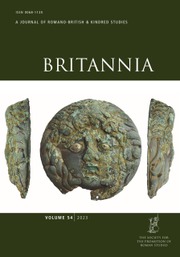No CrossRef data available.
Article contents
Spoon-Shaped Objects with Weapon Terminals from Western Britain
Published online by Cambridge University Press: 07 November 2025
Abstract
A small group of late Roman ‘spoon-shaped’ objects with weapon terminals and a westerly distribution add to the growing evidence of ‘regionality’ in material culture within Roman Britain. While their function remains uncertain, the presence of weapon-shaped terminals can be seen alongside the increasing numbers of model objects recorded from the province.
Keywords
Information
- Type
- Shorter Contributions
- Information
- Copyright
- © The Author(s), 2025. Published by Cambridge University Press on behalf of The Society for the Promotion of Roman Studies.
Footnotes
*I am grateful to Nina Crummy and Martin Henig for reading an earlier version of this paper and to Michael Bishop for information and discussion of the weapon types. Oliver Blackmore of the Newport Museum and Art Gallery and Evan Chapman of the National Museum of Wales for information in respect of the Caerwent objects. To Arthur Price for permission to reproduce the Frocester Court illustrations, English Heritage the Wroxeter example and to Archaeologia Cambrensis for permission to reproduce the Minchin Hole illustration. The distribution map is by Mark Hoyle.

